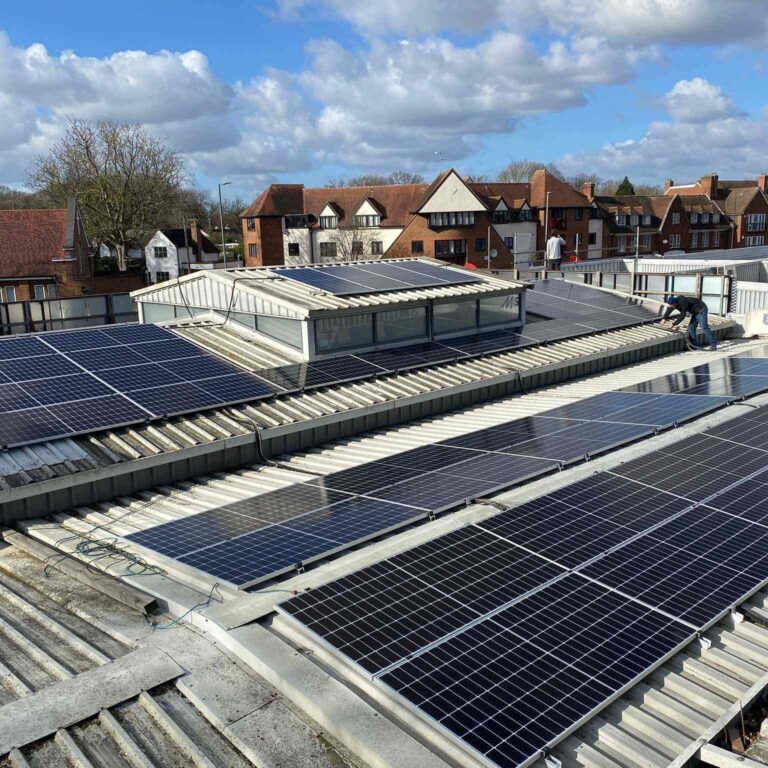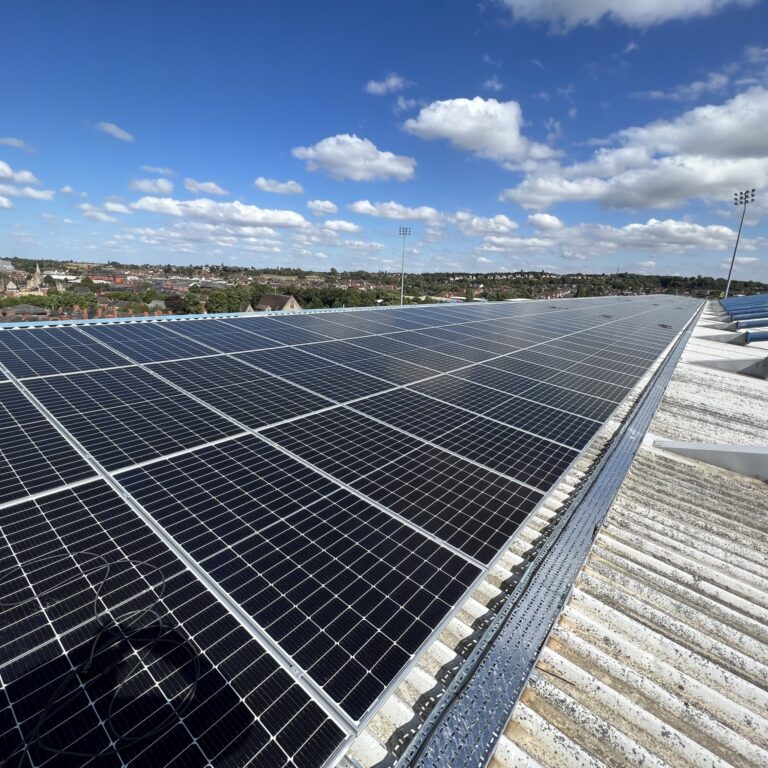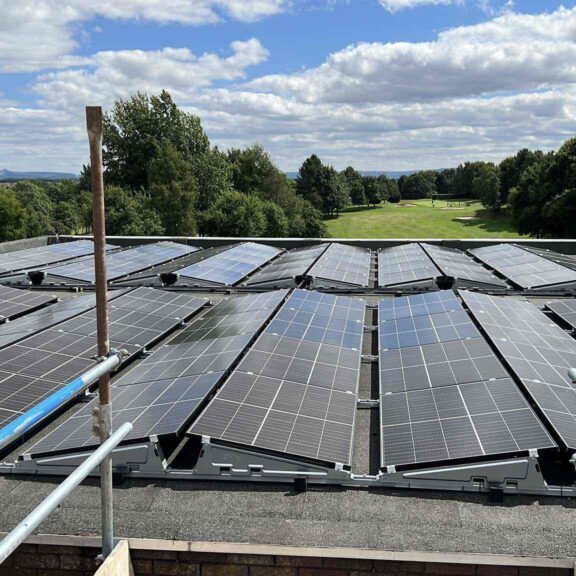Investing in commercial solar panels is a smart move for businesses in the UK looking to reduce energy costs and improve sustainability. However, to fully reap the benefits, it’s essential to maximize the energy production of your solar system. This guide offers practical advice on how businesses can optimize the performance of their commercial solar panels, from proper placement to ongoing maintenance and energy management systems.
Understanding the Importance of Maximizing Energy Production
Maximizing energy production from commercial solar panels directly impacts your return on investment (ROI). The more efficiently your system operates, the greater the energy savings and financial benefits. For UK businesses, where energy costs are a significant operational expense, optimizing solar energy production is crucial for reducing reliance on the grid and achieving energy independence.
Commercial solar panels are a long-term investment, and ensuring they operate at peak efficiency is key to getting the most out of your installation. By focusing on factors like placement, maintenance, and energy management, businesses can significantly enhance the performance and longevity of their solar panels.
Optimal Placement of Commercial Solar Panels
The placement of your commercial solar panels is one of the most critical factors in maximizing energy production. Proper placement ensures that your panels receive the maximum amount of sunlight throughout the day, which directly influences the amount of electricity generated.
1. Orientation and Tilt Angle
- South-Facing Orientation: In the UK, solar panels should ideally face south to capture the most sunlight. A south-facing orientation ensures that your panels are exposed to sunlight for the majority of the day, maximizing energy production.
- Optimal Tilt Angle: The angle at which solar panels are installed also affects energy production. For the UK’s latitude, an angle between 30 to 40 degrees is generally recommended. This tilt allows panels to capture the maximum amount of solar radiation throughout the year, balancing energy production between summer and winter months.
2. Avoiding Shading
- Minimize Shading: Even partial shading can significantly reduce the efficiency of solar panels. Trees, buildings, and other obstructions should be avoided to ensure that panels receive unobstructed sunlight. Conduct a shading analysis during the planning stage to identify and mitigate any potential shading issues.
- Solar Panel Layout: The layout of the solar panels should be designed to minimize shading. For example, placing panels in rows with sufficient spacing can help avoid shading from adjacent panels.
3. Utilizing Available Space
- Roof Space: Utilize as much roof space as possible to install the maximum number of solar panels. Flat roofs are particularly advantageous as they allow for adjustable mounting systems, which can optimize the tilt angle and orientation of the panels.
- Ground-Mounted Systems: If roof space is limited, consider ground-mounted solar panels. These systems offer more flexibility in placement and can be positioned to achieve optimal sun exposure.
Regular Maintenance for Peak Performance
Regular maintenance is essential to ensure that commercial solar panels continue to operate at peak efficiency. Without proper care, the performance of the panels can degrade over time, reducing energy production and the overall return on investment.
1. Routine Cleaning
- Remove Debris and Dust: Dust, dirt, bird droppings, and other debris can accumulate on the surface of solar panels, blocking sunlight and reducing efficiency. Regular cleaning, especially in urban or industrial areas where pollution levels are higher, is crucial to maintain optimal performance.
- Seasonal Cleaning: In the UK, where weather conditions can vary, it’s important to clean solar panels seasonally. For example, after the autumn leaves have fallen or following a long winter, cleaning can remove accumulated debris that might obstruct sunlight.
2. Monitoring System Performance
- Use Monitoring Tools: Install a monitoring system that tracks the performance of your solar panels in real-time. These systems can alert you to any drops in performance, allowing for timely maintenance and repairs. Monitoring tools are essential for identifying issues like faulty inverters or shading that could affect energy production.
- Regular Inspections: Schedule regular inspections by a qualified technician to check the condition of the solar panels, wiring, and inverters. This proactive approach helps prevent minor issues from escalating into costly repairs.
3. Preventive Maintenance
- Inverter Maintenance: The inverter is a critical component of a solar energy system, converting the DC electricity generated by the panels into AC electricity used by your business. Regularly inspect and maintain inverters to ensure they are functioning correctly, as a faulty inverter can significantly reduce energy production.
- Panel Degradation: Solar panels naturally degrade over time, losing efficiency at a rate of about 0.5% per year. While this is a gradual process, monitoring panel performance and replacing underperforming panels can help maintain overall system efficiency.
Leveraging Energy Management Systems
Energy management systems (EMS) are powerful tools that can help businesses maximize the efficiency and effectiveness of their commercial solar panels. By optimizing how and when energy is used, businesses can further increase their savings and reduce reliance on the grid.
1. Energy Storage Solutions
- Battery Storage: Integrating battery storage with your commercial solar panels allows your business to store excess energy generated during the day for use during peak demand periods or at night. This reduces the need to purchase expensive electricity from the grid and ensures a consistent energy supply.
- Load Shifting: Use energy management systems to shift energy-intensive processes to times when your solar panels are producing the most electricity. By aligning energy consumption with peak solar production, businesses can reduce grid dependency and maximize the use of renewable energy.
2. Smart Energy Management
- Demand Response Programs: Participate in demand response programs offered by energy suppliers, where businesses are incentivized to reduce energy consumption during peak grid demand periods. An EMS can automate this process, temporarily reducing non-essential energy use and maximizing solar energy utilization.
- Real-Time Data Analytics: Advanced EMS platforms provide real-time data analytics, offering insights into energy usage patterns and system performance. By analyzing this data, businesses can identify opportunities to optimize energy use and improve the overall efficiency of their solar energy system.
3. Scalability and Future-Proofing
- Scalable Systems: As your business grows, your energy needs may increase. Choose a scalable solar energy system that can be expanded over time. By planning for future growth, you can continue to maximize energy production as your energy demands evolve.
- Future Technologies: Stay informed about advancements in solar technology and energy management. Emerging technologies, such as more efficient solar panels or AI-driven energy management, can further enhance your system’s performance and offer additional savings.
Conclusion: Maximizing the Potential of Commercial Solar Panels
For UK businesses, investing in commercial solar panels is an effective way to reduce energy costs and improve sustainability. However, to fully capitalize on this investment, it’s essential to maximize the energy production of your solar system. By focusing on optimal placement, regular maintenance, and leveraging energy management systems, businesses can ensure that their solar panels operate at peak efficiency.
Maximizing energy production from commercial solar panels not only improves the return on investment but also enhances your company’s energy security and environmental credentials. As energy costs continue to rise and sustainability becomes increasingly important, optimizing the performance of your solar energy system is a strategic move that will benefit your business for years to come.



